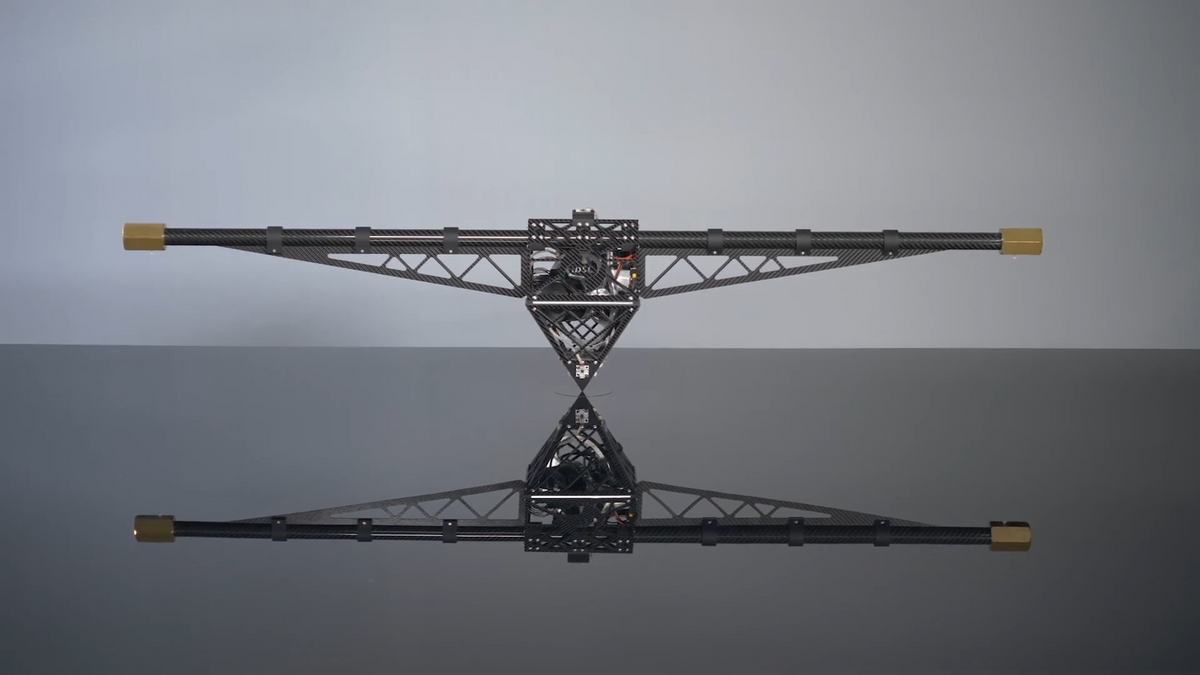Eight years and 14 million views ago, ETH Zurich introduced the Cubli, a robotic cube that can dynamically balance on a single point. It’s magical to watch, but at the same time fairly straightforward to understand: There are three reaction wheels within the Cubli, one for each axis. And in a vivid demonstration of Newton’s third law, spinning up a reaction wheel exerts a force on the cube in the opposite direction, resulting in precision control over roll, pitch, and yaw that allows the Cubli to balance itself, move around, and even jump.
This is very cool, but obviously, controlling the Cubli in three axes requires three reaction wheels. If you took out a reaction wheel, one of the Cubli’s axes would just do whatever it wanted, and if you took out two reaction wheels, then surely it would topple over, right?
Right…?
Figuring that an appropriate number of actuated degrees of freedom for a self-balancing cube was somehow too easy, researchers from ETH Zurich (Matthias Hofer, Michael Muehlebach, and Raffaello D’Andrea) decided to build a One-Wheel Cubli, which manages to balance on a point just like the original Cubli, except with only a single reaction wheel. Whoa.
The One-Wheel Cubli (OWC) uses its single reaction wheel to control itself in both pitch and roll. The yaw degree is uncontrolled, meaning that the OWC can spin around on its pivot point—although, thanks to friction, it doesn’t. Having more degrees of freedom than actuators (in this case, reaction wheels) means that the OWC is underactuated. But obviously, full control over two very separate axes is required to pull off this balancing act. So how does it work?
Designer Matthias Hofer explains that you can think of the One-Wheel Cubli’s balancing as if you were trying to balance both a pen and a broomstick vertically on your palm. That is, if you also imagine that you only have to worry about balancing them on one axis—they’ll only tip toward you or away from you, and you can move your palm underneath them to compensate. The pen, which is shorter, will be harder to balance and require small, rapid movements of your palm. Meanwhile, the broomstick is much easier to balance, and you can do so with slower movements. This is essentially the working principle of the OWC: You may only have one control input to work with, but the small, fast movements and the large, slow movements are decoupled enough that one actuator can manage them both independently, by making the small, fast movements within the large, slow movements. And this, incidentally, is the reason for that long beam with the weights on the end that differentiates the One-Wheel Cubli from the original Cubli: it’s there to maximize that difference in inertia between the two axes you’re trying to independently control.
“Seeing the OWC balance for the first time was counterintuitive, as the working principle is not obvious,” Hofer told IEEE Spectrum. “It was very satisfying for us, as it meant that every puzzle piece of the project that Michael Muehlebach, Raffaello D’Andrea, and I, along with our technical staff (Michael Egli and Matthias Müller), contributed to finally worked—including the theoretical analysis, the prototype development, the modeling, the state estimation, and the control design.”
All those puzzle pieces took a long time to fit together, and required years of work to get from something that would theoretically work on paper to an actual working system. After the failure of a couple of early hardware iterations, the researchers put some extra effort into a much more detailed modeling approach, which they then leveraged into the control system that was ultimately successful. One of the most important tricks, it turned out, was to carefully model exactly how the beam with the weights on its ends deflects. The deflection isn’t much, but it’s enough to screw everything up if you’re not careful. And as you can see in the video, the control system is successful enough that despite the underactuated nature of the OWC, it’s even able to compensate for some gentle nudging.
The One-Wheel Cubli is more than just an abstract hardware and software project. There are potential useful applications here, one of which is attitude control of satellites. Many satellites already use reaction wheels to keep them pointing in the right direction, and these reaction wheels are so critical to a satellite’s functionality that spares are typically included, which add mass and complexity. For satellites that have long structures (like instrument booms) that provide different mass moments of inertia along different axes, the OWC’s control technique could provide an additional means of redundancy in case of multiple failures of reaction wheels.
We asked Hofer about what he might like to work on next, and it sounds like taming that uncontrolled yaw axis is a potential way to go. “An interesting extension would be to also control the yaw degree of freedom,” Hofer says. “If the reaction wheel is not mounted orthogonally to the yaw direction, it would affect both tilt angles plus the yaw direction. If all three degrees of freedom have different mass moments of inertia, the current working principle of the OWC could possibly be extended to all three degrees of freedom.”
Evan Ackerman is a senior editor at IEEE Spectrum. Since 2007, he has written over 6,000 articles on robotics and technology. He has a degree in Martian geology and is excellent at playing bagpipes.



